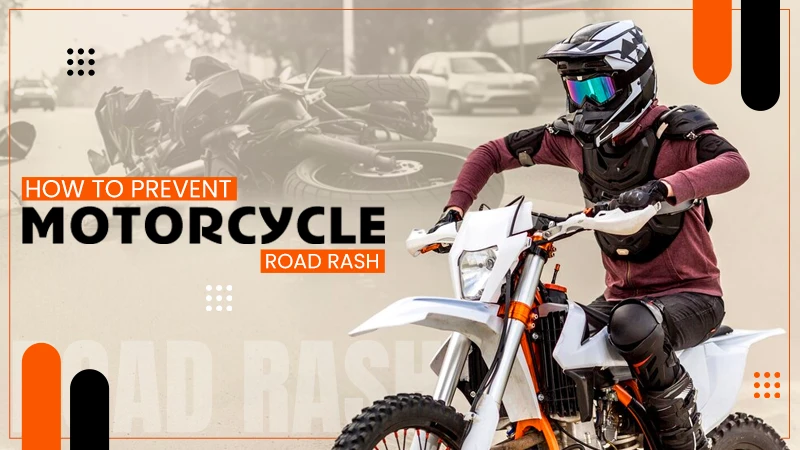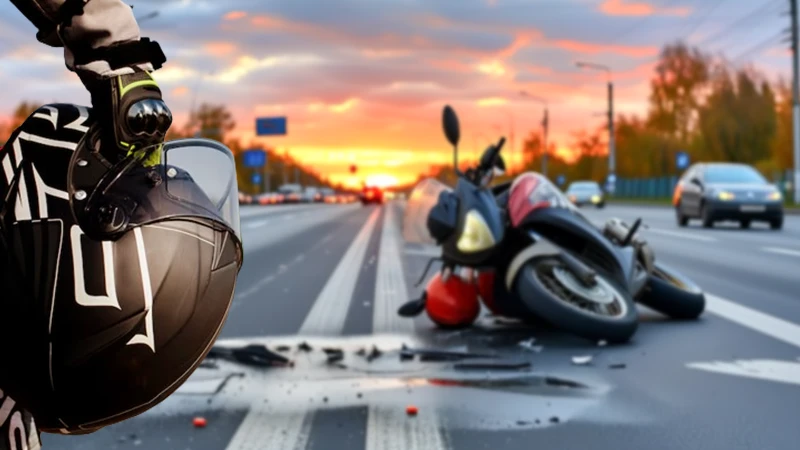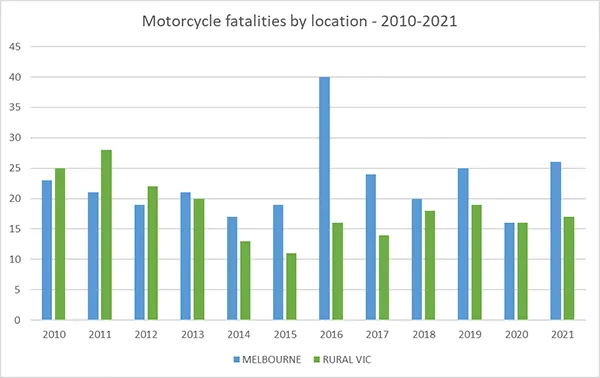
“Recovering from a motorcycle accident can be a long and difficult road, but it’s worth the effort to ride again.”
When the wind is whipping through your hair the sun is shining like crazy, and the roads spread endlessly before you to conquer.
There’s nothing more adventurous than a motorcycle ride. But it can also carry an inherent risk of road rash.

They say that wounds heal, which is true, by the way. But not so fast!
However, road rash is considered a minor injury like a little scrape a child gets after falling from a bike or skateboard. But it can also get you in big trouble in the long term if treated slowly.
So, in this read, I will walk you through the entire process you should follow in a motorcycle road rash. And how getting help for your motorcycle accident can quickly minimize long-term suffering.
Let’s start!
So, What Exactly is a Road Rash?
Road rash is a trauma to the skin tissues resulting from friction with the road’s surface. It is a major burn on the skin which is sometimes referred to as “raspberries” for its red appearance.
Most motorcyclists are familiar with the term “road rash” and may have even experienced this. It is one of the worst feelings in the world. It can amount to major trauma, medical costs, and significant health injuries, leaving permanent scars behind.
Likewise, it is one of the most common injuries in a road accident, comprised of a distinct variety of injuries, such as:
- An abrasion is a superficial injury that appears when the road’s surface scraps away the skin layer and leaves the skin exposed.
- Avulsion, In which the road’s surface forcibly tears the skin or separates it from the one underneath it.
- A laceration is a type of skin wound that is usually caused by a sharp object or a severe impact with a blunt force (In this case, a road’s surface!) and,
- Thermal burn, again, is a type of skin injury caused by excessive heat, in which friction with the road’s surface generates heat that burns the skin.

And just like the skin burns, road rash severity is also defined in the degrees, which is as follows:
First Degree Road Rash
The first-degree road rash is identified as a minor one that features small scraps, redness, bruising, and slight tenderness.
Although it heals on its own and usually does not require immediate treatment, you should be careful with the signs of infection. So, be sure to put the antibacterial ointment or vitamin E oil on the wound.
Second Degree Road Rash
Second-degree rashes are serious skin injuries that involve bleeding and swelling. It radiates heat and exposes muscles. tendons and nerves. It can be painful, so make sure to keep the wounds clean and seek medical attention as soon as possible.
Third Degree Road Rash
Third-degree road rash is a severe condition of a skin injury. It may include the ripping of the entire 5 layers of the skin, exposing the muscles and bones from the wounded side.
The impacted area may show signs of heavy bleeding and major swelling. So it is advised not to touch the wound as it could result in serious infection. Medical attention should be sought immediately.
Did You Know?
According to the NHTSA, there are more than 20,000 road rash injuries recorded every year and approximately 11% of them suffer from third-degree road rash injuries
Travel Tips to Avoid Road Rash
We all want to keep that incredible memory of the exhibiting two-wheeler ride when we experienced freedom to its fullest.
So here are some of the travel tips you can follow to make that memory epic and not turn it into a medical record.
- Invest in a high-quality helmet to protect yourself from any major head injury. And make sure it is DOT-approved.
- Leather is a rider’s friend, so make sure to invest in a good-quality leather jacket, pants, and gloves.
- Match your speed to the circumstances, because sometimes overconfidence can get you in big trouble.
- I know that you might be a pro rider, but still, there’s always a chance of improvement, so make sure to practice before actually hitting the road.
- Pack smart and don’t try to overload your bike as it increases the chances of an accident.
- And always carry first aid kits to treat minor scrapes and cuts.
How to Treat Road Rash Injuries at Home?
Road injuries can be tough and can significantly affect your long-term health. But it is not always that complicated, and most road rash injuries can be treated at home with the help of a first aid kit and some simple precautions.
The following are some of the best practices you can use to treat motorcycle road rash at home. Take a look!
- Wash your hands with the soap before touching the wound to avoid serious infection.
- Gently wash the impacted area with clean water, without applying too much pressure.
- Carefully remove the debris, such as small rocks or a piece of metal. If you feel you can’t reach it, contact the doctor.
- Apply antibiotic ointment or vitamin E oil on the wound.
- Cover the wound with non-adherent clothing and use tape to secure the tie.
- Use an ice pack to relieve swelling, but don’t apply directly to the injury.
- Manage your pain with the usual pain reliever, such as ibuprofen or acetaminophen.
- And, make sure that you are up-to-date with your tetanus shot.
These are carefully monitored practices for first-degree road rash. But if you have been in an unfortunate event of a second or third-degree rash, it is highly recommended to contact your doctor ASAP.
The Bottom Line
Motorcycle travel is an exhibiting adventure ride. It lets you experience the freedom of the open road and provides a sense of liberation that is not easily found elsewhere.
This is why we need to make this epic and not turn it into an unfortunate moment. Because road rashes can be painful and potentially life-threatening.
Beyond the physical consequences of scars and pain, it may even cause stress, anxiety, depression, and more, leaving a substantial impact on the patient’s mind. Which is why it should be addressed quickly.
That’s it! Your complete roadster’s guide to road cash. Hope it helps!
Also Read: Every Motorcyclist Will Face in Arizona











